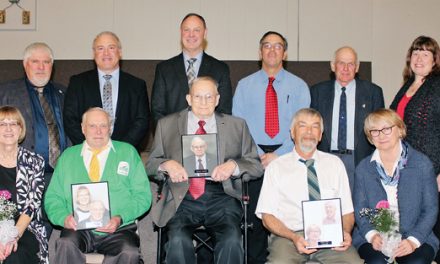CHESTERVILLE – For several years, work has been undertaken to ensure people working and living in Eastern Ontario, as well as other rural areas, were able to have access to a stable internet conductivity. As SDSG MP Eric Duncan noted during a virtual town hall meeting on June 17, the “gap between urban centres and rural areas and communities like ours” in terms of cell capacity and internet conductivity has been highlighted by this medical emergency. The restrictions placed upon society by governments attempting to control the spread of Covid-19 in this country has resulted in students continuing their education online, people working from home and governments as well as businesses using technology to conduct business.
Included in the panel was Lisa Severson, communications director of the Eastern Ontario Regional Network (EORN). Created by the Eastern Ontario warden’s caucus, this organization “helps to create innovative public-private partnerships to address the digital divide and support a stronger future for Eastern Ontario” according to information obtained from their website, www.eorn.ca. Severson provided an overview of the work undertaken by EORN which included a four-year project completed in December 2014 to bring up to 10 megabits/second download and 1 megabit/second upload, fibre connections to 63 business parks and a satellite component.
Severson continued when this project was completed, parliamentarians from Eastern Ontario asked EORN to investigate cell phone gaps due to difficulties they, as well as their constituents, encountered when using cell phone technology. In 2017 a business case was submitted to the federal and provincial governments, with a decision to support these plans made in 2019. Goals include having 99 per cent of the area where people live, work or travel having access to cell service and 85 per cent of this area having the technology to stream high definition images. There is now access to the funding, with the Request for Proposals due to be received in August, reviewed, contracts completed and work to begin in spring of 2021. She acknowledged the continued investment by private sector partners, without government assistance, in the area described by Severson as close to the size of Nova Scotia.
The Canadian Radio and Telecommunications Commission (CRTC) announced that 90 per cent of Canadians should have access to 50/10 service by 2021 and by 2030 the last 10 percent of Canadians would have access to this conductivity.
Severson mentioned this will be achieved by major cities in this country getting this level of service before commenting that rural areas need this service as soon as possible. A cost analysis was done by EORN in 2018 which showed how bringing 50/10 to the area would cost between 500-750 million dollars. An investigation into the cost of bringing a gigabyte service to the home in 95 per cent of the region with a wired solution, has a price tag being “approximately 1.2 to 1.6 billion dollars”. She noted how bringing this service to the area would resolve the issue of internet conductivity for a longer period of time than the 50/10 solution.
Michelle Rempel Garner, MP for Calgary Nose Hill and vice chair of the standing committee on Industry, followed Severson, providing information on work done by the federal government and the Conservative party on broadband service for rural areas. She mentioned there is a need for all Canadians to have access to a secure, affordable source of conductivity to ensure equality of access and economic development.
Rempel continued there needs to be a tangible rural broadband strategy with her party, developing a series of recommendations and holding consultations with Canadians across this country on this issue; she continued how over the years there have been many problems associated with the development of broadband service, noting the needs over 60 per cent of rural households do not meet CRTC goals, with the problems “more acute in rural Canada.” Recommendations include accountability, role of municipal governments, government investments and infrastructure concerns.
Duncan commented on the timeline for internet projects that it is sometimes too long and the technology can become outdated by the time the project is completed. He continued how it can take several years for development to move through concept, to funding, to construction to completion with this being a significant problem which needs to be solved.
Issues such as the rural cellular service gap, reducing the timeline for technological changes, regulatory change and business-government cooperation were discussed during the question and answer period.











